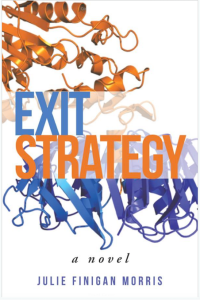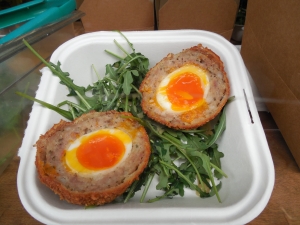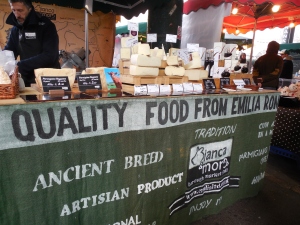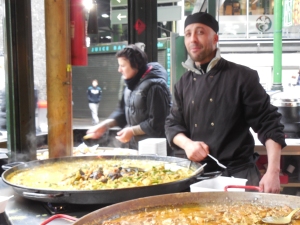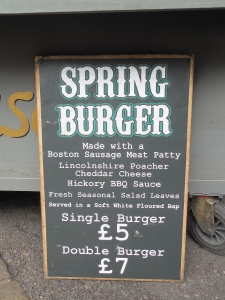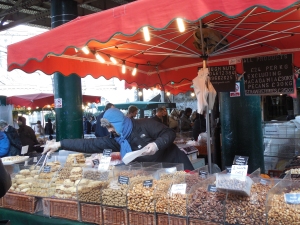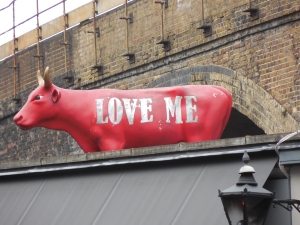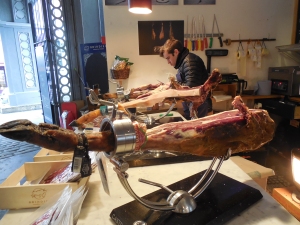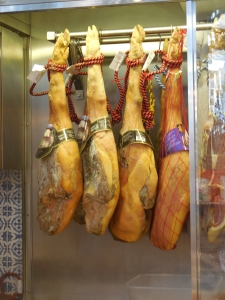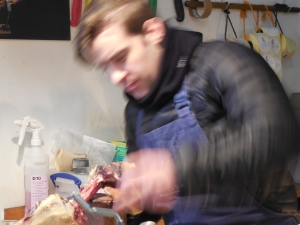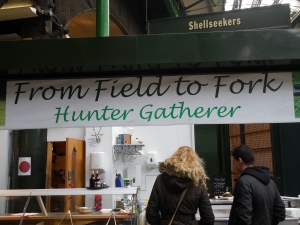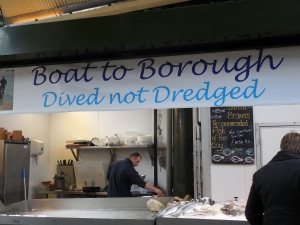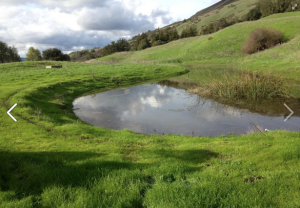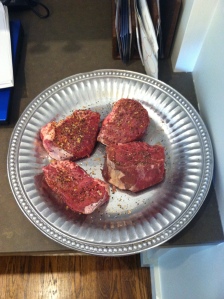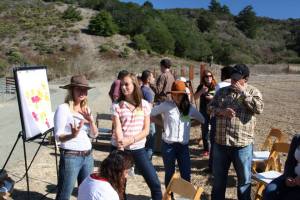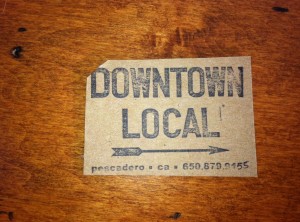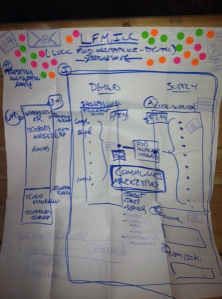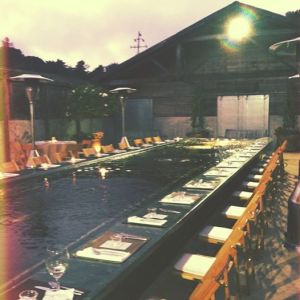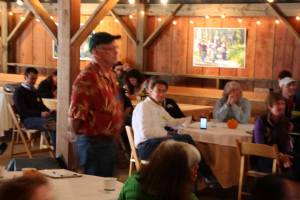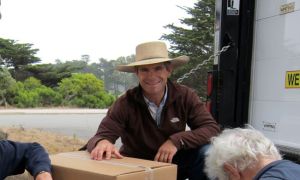Exit Strategy
April 7, 2017
“A crisis is a terrible thing to waste.”
~ Economist Paul Romer
I started working at a large produce company in April, 2005. My job was to assist the CEO with presentations, government relations and internal communications. I loved it. I advocated for healthy food policy on the national level, met interesting people in the organic agriculture world, and learned how our food is processed from farm to table. That all changed on September 14, 2006 when we found ourselves at the center of one of the largest foodborne illness outbreaks ever. E.coli-contaminated spinach, packed at one of our facilities in San Juan Bautista, California, had sickened hundreds of people across the country and killed three. Literally overnight, my job went from communicating the benefits of eating organic salads to helping coordinate a federal investigation between growers, scientists, investigators, lawyers, insurance agents and victims. For the next four years, I waded through lawsuits and assisted with the attempted sale of the company three times. The third time, the deal actually went through. The family-owned company that celebrated high morale, profit-sharing and innovation was unrecognizable by the time I left in 2010.
Exit Strategy is my first novel and is based on the E.coli crisis of 2006. It is a fictional account, but the themes could be taken from today’s headlines: income inequality, sexual harassment in the workplace, and immigration issues all circulate as a company struggles with its identity and future. Available in both print and eBook, I hope you will support me by buying a copy for yourself, a friend or family member, donate a copy to a local library and/ or request your local bookstore to carry it.
Below, I have listed five easy ways you can help me spread the word about Exit Strategy. (Shout out to Pieces of Me Author Lisbeth Meredith for these tips.) If you’ve already done any, or all, of these, I can’t thank you enough. If you haven’t had the opportunity yet, I would be so grateful if you’re inclined to support me. Thank you!
How you can help support Exit Strategy:
1. SOCIAL MEDIA: LIKE my page on Facebook (https://www.facebook.com/juliefiniganmorris), follow me on Instagram (@finimo), and share news about the book via social media (tag me when you do, so I can thank you, and please be patient while I catch up with thank you’s!) Also, feel free to join the conversation by using the hashtag #exitstrategy when posting.
2. BUY THE BOOK: Please consider buying the book! The first few months it’s on sale are VERY important for a new book release. You can order it through your local bookstore, direct from my publisher Author House, at Barnes and Noble (online or in person), and through Amazon. All of these links can be found on my website: http://juliefmorris.com
3. REVIEW: After you’ve read the book, post a review/rating of the book on Amazon. Reviews will help potential readers decide whether or not to buy the book, and the more reviews, the better.
4. GOODREADS: Add Exit Strategy: A Novel to your shelf on Goodreads and rate it honestly.
5. FOLLOW ME FOR INFO ON READINGS & EVENTS, OR SET AN EVENT UP YOURSELF: Join me at one of my upcoming events, and keep an eye on my website for more updates at http://juliefmorris.com Also feel free to schedule your own event, I would be honored to speak or do a book signing for your group. You can contact me via my website at https://juliefmorris.com/contact/ From civic groups to fundraisers, book groups, faith communities, the possibilities to connect in person or via Skype are endless.
Whatever you decide to do, how big or small, it helps and it means so much. Thank you for your continued support and encouragement, and please let me know how I can pay it forward.
Thank you so much,

Julie Finigan Morris
Local food: London style
March 17, 2015
Across the pond this week, in London where there is no shortage of good food. We went to Borough Market yesterday: a feast for every sense. Bustling with artisan vendors, office workers grabbing a quick lunch, and chefs picking up ingredients for their restaurants, the outdoor marketplace has been a central part of the London foodie scene since the 13th century.
What I love is the international celebration of food that is produced close to home and on a small scale: there are no industrial farming practices seen in this place. Signage on most vendors booths pays homage to food raised slowly and without chemicals or inhumane treatment. Methods are explained in detail to curious tourists asking questions about everything from how long the perfect Parmesan cheese is aged to the best way to cut meat from the bone, I’ll let the pictures do the talking from here. As you see the sights: be sure to imagine the accompanying sounds of enthusiastic vendors encouraging you to try a sample, aromas of warm paella, and feel of 600 year-old cobblestones under feet.
Mixing it up at TomKat Ranch
October 21, 2014
What do you get when you mix together innovators, entrepreneurs, farmers & ranchers? Great ideas that are already helping to change the landscape of local food production and consumption in California.
The Pescadero Idea Hack, held in Pescadero, Calif. on October 11, 2014, was the brainchild of The Mixing Bowl Hub’s Rob Trice and his wife, TomKat Ranch Executive Director Wendy Millet. Millet and her amazing team at the TomKat Ranch are our partners in the push to make grassfed beef the new normal. Like Morris Grassfed, TomKat Ranch is committed to considering the land, animals and people when producing its LeftCoast Grassfed beef and has worked hard to increase local, grassfed beef consumption in schools and restaurants in San Mateo County.
We started the day with introductions and it was humbling to be a in a room (a barn, actually) with so many people dedicated to producing good food and creating local markets that encourage and reward the work of farmers and ranchers.
“Our objective is to build upon numerous assessments and dialogues on the topic of the Peninsula’s local food production, and develop a range of actionable solutions. A byproduct of the Idea Hack is to connect individuals and organizations that could potentially collaborate to bring about desired changes,” Trice said in his opening remarks.
Participants like Karen Liebowitz, co-founder of the soon-to-open The Perennial restaurant in San Francisco and Pete Hartigan, Founder & CEO of Trusted Ventures, LLC are not only innovative thinkers, but agents for social change. Liebowitz’s new restaurant will source foods from local farms and ranches that go way beyond industrial, monocrop organics; they actively address climate change with their farming practices.
“We first started thinking about what can we do to engage with our environment more closely — not just farm to table, but really deeply engage,” Liebowitz said in a recent interview with the San Francisco Chronicle. The Perennial will be a “laboratory,” in which all aspects of the restaurant’s business — relationships with farmers, sustainable practices, choice of vendors — are seen through the lens of environmental impact, the article said.
Hartigan has put his money where his heart is. The founder of several successful start-ups, his latest is Trusted Ventures, LLC which aims to develop what he calls the “Impact 500” targeting existing Fortune 500 cash flows in areas like finance, healthcare and education, with a model where helping the community is how the company competes versus the traditional maximize shareholder profit model. If this sounds familiar, it’s because Hartigan has already created successful companies using the model, including the alumni-funded college loan business sofi.com, which he plans to take public this Spring. He’s not wasting any time on his next project ether. Our breakout group’s challenge: How Can We Increase the Amount of Local Food Consumed by Local Institutions?
After an hour-long discussion with institutional food buyers (Stanford and Google), distributors, farmers and ranchers we developed the “LOCAL FOOD MARKETPLACE, INC.” (LFM). Our idea is to develop a collaborative, digital market maker, facilitator/coordinator. LFM can create a demand book for local institutions looking to buy local food supply and aggregate local supply. To pay the premium for fairly priced local goods, dining services organizations can supplement their budget through HR budgets (since employee good food eating should result in lower health costs) or a company’s community social responsibility funding. Financial institutions with a social mission can finance working capital for growers. Participating growers can have an ownership stake in LFM’s success. (We won First Place, by the way.) Bam.
Other challenges included: How to train and support the next generation of farmers and ranchers? How to scale local food production? and How to deepen the connection between SF Peninsula eaters and growers? We took a hike on the spectacular TomKat ranch after our breakout sessions and capped the day with a candlelight dinner around the ranch’s coi pond table: a stunning setting and perfect way to celebrate the beauty and bounty of local food. The Mixing Bowl plans several follow-up sessions and has started discussion groups for each idea we came up with. The real success here is the awareness that good, local food is not only delicious, it’s a force for economic, social and ecological good.
All Things Connected
June 19, 2014
I recently saw a story about environmentalists’ relationship with meat that posed the question: “Can you call yourself an environmentalist and still eat meat?” It featured Hollywood Director James Cameron and his wife, Suzy Amis Cameron, who have started an all-vegan school, the first of its kind in the U.S. Amis Cameron said she believes that, “You can’t really call yourself an environmentalist if you’re still consuming animals. You just can’t.”
Amis Cameron’s comment is not uncommon. I hear it often from well-meaning friends and fellow environmentalists. I respect their efforts to be responsible, but I am always amazed they don’t look at the environment in a more holistic way. The responsibility is on us to ask how our food is produced.
Animals play a crucial role in a healthy ecosystem. Eating meat is simply a final step in honoring – and utilizing – that part of the system. Managed properly, animals act as natural tillers, fertilizers and harvesters in the garden we call Earth. When moved often and not confined, like in the wild when being preyed upon by predators, cattle actually increase the growth of native, perennial plants whose deep roots hold soil and water in place, storing carbon underground where it belongs. They build soil health by tilling and aerating it with their hooves, fertilizing it and pruning the plants they munch on to keep them healthy and growing. It’s a microbial Oktoberfest! Their byproduct – hamburgers, rib-eye steaks and beef jerky – provide essential proteins. Meat is a nutrient-dense food that nourishes bones, muscles, cartilage, skin and blood, all with minimal calories. Eating meat is a win-win when looked at as a system. The real question is: “Can you call yourself an environmentalist and not eat meat?”
Vegans may not eat meat, but they certainly consume animals. And their plants are often fertilized with manure from confined animal feeding operations. How’s that for irony? Further, vegans and vegetarians often believe that things don’t die to produce their food. This flies in the face of even the most basic understanding of the carbon cycle, aka the “life cycle.” If you are eating, you are consuming plants or animals that depended upon the deaths of past critters. As our ability to peer beneath the soil surface improves, we can see that even some of these critters have faces.
Amis Cameron won’t eat a steak, but she depends upon manure to fertilize her plant-based foods, cattle intestines and tallow for her beauty products, life-saving vaccines and medicines, hides for her furniture upholstery, clothing and accessories, and fatty acids to hold the tires together on the fossil fuel hungry private jet. She, too, participates in the carbon cycle.

Source: Tennessee Beef Industry Council
And why is it acceptable for environmentalists to shun meat, but consume fish? Do they not know that our oceans are also suffering and we need to be aware of how fish are harvested if we are to protect the environment? According to the Monterey Bay Aquarium’s Seafood Watch, “Over the past five decades technology has allowed us to fish farther, deeper and more efficiently than ever before. Scientists estimate that we have removed as much as 90 percent of the large predatory fish such as shark, swordfish and cod from the world’s oceans. In 2003, the Pew Oceans Commission warned that the world’s oceans are in a state of “silent collapse,” threatening our food supply, marine economies, recreation and the natural legacy we leave our children.” Like cattle, fish need to be managed in a way that protects and nourishes the environment. Beef is one type of meat. Halibut and salmon are others.
Alternative protein sources have environmental effects as well. Industrial soybean production, required for every vegan’s Gardenburger, tofu, and glass of Silk soy milk, is responsible for the massive “Dead Zone” pollution in the Gulf of Mexico and deforestation in Latin America. Of course, there are responsibly sourced soybeans too. I wonder if most vegans ask how their soybeans are grown? 
It takes huge amounts of fossil fuels and GMO seeds to produce vast monocultures of soybeans stretching from Minnesota to Louisiana. There’s no party in that soil. I’d rather get my protein from the humble cow hosting the microbial Oktoberfest.
It comes back to looking at life and our environment as a connected cycle, a system in which one action triggers another and so on. We’re all connected in more ways than we know.
A Shifting Landscape
April 8, 2014
There’s a messy food fight happening in kitchens across America. Like the disruptive innovators before them – Netflix, Uber and Square, to name a few – small farms and ranches are shaking the foundations of a powerful industry and sending shivers up the spines of their well-established, powerful competitors. Just five years ago, farmers’ markets and Community Supported Agriculture (CSA) were minor annoyances to the Food and Beverage Industry. But that’s changing rapidly. According to a recent report by the Harvard Food Law & Policy Clinic by 2008 “the value of local food sales in the United States reached $4.8 billion, up from $1.2 billion in 2007 and $551 million in 1997.”
Sessions at the Produce Marketing Association’s annual Fresh Summit Trade Show labeled local as a “trend” and patted us on the head with a smile. Common responses to the scrappy dog, pulling at the pant leg of marketing executives, were that local could never compete. They said, “The price point is too high,” “The quality not uniform enough for picky consumers,” and my personal favorite, “You can’t grow spring mix in Michigan in the winter.” What these companies didn’t see coming was the consistent cry from consumers wanting to know more about their food. People want to know who grew the tomato and how it was grown. They care more about the “Who and How” than they do about eating summer greens in January. I call it “First person certified.”
Joe and I started direct marketing grassfed beef to family and friends in 1992 after they dined at our home and asked, “Where can we buy this meat?” We worked with our local abattoir and butcher and within five years had developed a loyal following that came back year after year. They bought freezers to store a quarter cow and asked their mothers for Grandma’s Sunday roast recipe as they learned to use the whole cow. They brought their children to our Annual Field Day where Joe showed them how a border collie can gather a 100 cows and why perennial grasses and wildflowers can thrive where livestock have grazed. They liked that when they had a question, they could call us and we would pick up our own phone (or call them back if we weren’t in the office, which is often when you work in agriculture.) Twenty-two years later, we are still direct marketing and have a network of more than 900 members throughout California. When people from New York or Colorado call to ask if we ship, we direct them to a website that will help them find a local grassfed beef producer.
Innovation comes in many forms, often the result of an annoyed customer who says to herself: This should be easier! The old model is broken. Food based on cheap labor to grow and pack it, federally subsidized, imported water to grow it, plastic packaging to ship it, and $60-a-barrel oil to distribute it needs an alternative. Local networks are filling the space in innovative ways. Industrial, multinational food companies’ idea of a mobile strategy is making their websites fit on an iPhone screen. “New ideas” echo the 1950s: a coupon for participating in a survey or sweepstakes where you can win a shopping cart full of groceries, worth mere pennies to their bottom lines.
Meanwhile, local farmers are turning to a new model, one that makes it easier and more affordable to put good food on the table and actually adds value to consumers’ wallets and health. They’re using intuitive, interactive apps like Good Eggs, Whole Share and Farmigo that allow customers to add an extra dozen cage-free eggs to next Tuesday’s delivery. Working farm-centric communities, dubbed Agritopia, are replacing gated suburbs for nature and wildlife preserves as people realize the scarcity of water and opt for community gardens over golf courses. Marketing campaigns sponsored by local food advocacy groups such as Community Alliance with Family Farmers’ (CAFF) “Buy Fresh Buy Local” and the USDA’s “Know Your Farmer” raise awareness about the choices consumers have over their food purchases.
As people become more aware of their own decision-making power when it comes to food, the big guys are being asked about paying employees a living wage, challenged over inputs like pink slime and azodicarbonamide, aka the ‘yoga mat compound,’ or how many miles the spring mix traveled to Michigan.
Consumers want freshness. They also support organic, grassfed, local, no GMOs or antibiotics, and humane treatment of workers and animals. In the new model, you log on to your desktop or mobile device and order your favorite seasonal fruits, vegetables, meat and dairy to be delivered to your door (or picked up at a drop-off location) in a recycled cardboard box by your friend and neighbor. It’s either already paid for via your online account, or your delivery person swipes your credit card via Square and you’re on your way. The extra 50 cents per pound for meat employs your co-worker’s teenager, or better yet your own, who works for the local farm or butcher. That’s a win-win.

Packaged Food at Fred Meyer Store Source: http://www.flickr.com/photos/lyza/49545547
Ironically, the new model gets back to basics. All the labels that have emerged in the food industry can get exhausting. What ever happened to just going shopping? Does my chicken thigh really need to be certified by five organizations? The distance and anonymity of multi-national food companies has created another layer between people and their food, a whole new industry of third-party certification officers. If you don’t know who grows your food, you can outsource your relationship with the farmer to the USDA’s organic program or the American Humane Association’s animal welfare program who ensure that standards are being met. In the new model, your food is first person certified. If you want to know whether we feed our cattle grain or use sub-therapeutic antibiotics, you pick up the phone and call us. (We’ll tell you we don’t.) I answer texts and e-mails from our members every day. You can also come to our field day where we’ll show you the animals, the land and the people who produce your hamburger. The same goes for farmers who invite children to pick their own pumpkin at Halloween and strawberries in the summer.
The discussion among food industry leaders has gone from patting local producers on the head, to saying “there’s room for all of us'” to criticizing local as less efficient and unsustainable. Common battle cries are that “We have to feed the world.” and “Our food is cheaper!” But the innovators have shown there are farms and ranches all over the world that can feed their communities (recall pre-WW II?) and consumers don’t mind paying a bit more if it means their dollars strengthen the local economy. As industrial food marketers get more defensive, local food innovators are zooming past, coming up with even easier and cheaper solutions to getting their products on to kitchen tables, including adding a recipe for baked cauliflower in next week’s CSA box to replace that overpriced organic spring mix that’s been sitting in a truck for three days.
Building Relationships
April 17, 2011
Local food is about more than place and ingredients. It’s about building relationships. Relationships between people, land, plants, and animals. We had our annual Field Day this weekend and, as always, I came home exhausted but so happy that we do this each year. It takes some planning: menu, tables & chairs rental, prayers for good weather, etc. We hand formed 180 Morris Grassfed hamburgers Friday night, chopped a couple of pounds of fresh onions, dug up all my mismatched tablecloths from the linen closet, and arranged flowers for the tables. My mother-in-law, Anne, uses old cowboy boots as vases.
This year we were thrilled to host 160 guests who drove from as far away as San Diego. Lots of kids, which always makes it more fun, and several families who brought grandparents and out-of-town guests to see a “real California ranch.” We call it “First Person Certified” food. Thanks to the Morris Grassfed Team: Liz, Ev, Anne, Rich, and our chef Tim Fowles – for all your help!
Thanks for visiting! ~ JFM … Here are some photos of the day:

After our walk on the ranch, guests relaxed over Morris Grassfed burgers, salad, and good conversation
Food Forward
July 27, 2010
We had the pleasure last month of meeting Greg Roden and Stett Holbrook, two independent film makers working on a documentary about … food. I know, I know, maybe some of you are experiencing some “food fatigue” with all the recent books and documentaries about how our food is produced.
Indeed, people like Michael Pollan and Alice Waters have raised awareness about our food. Films like Food Inc., and Fast Food Nation have prompted the question: “What is this made of?” These are good questions though, and, larger than just ourselves. The food we eat affects more than our own health. Depending on how it is produced, food can be a hindrance (CAFOs, large monocrops, and pesticides flowing to the Gulf of Mexico) or help (healthy watersheds, carbon-sucking, healthy grasslands, abundant oceans) to our planet.
Greg and Stett are tackling a new angle on the food theme: looking at the people who produce it. They have moved beyond criticism of federal subsidies for corn and pollutants in industrial production (not that those are not still problems) to Solutions. Food Forward is a celebration of fishermen who catch sustainable fish, community gardens that feed inner-city neighborhoods and build community, and – full disclosure here: grassfed beef ranchers that manage for healthy rangelands and humane treatment of animals. Check out the trailer here: http://www.foodforward.tv/default.aspx
As a journalist, I was taught to write about all the sides of the story, offer an informed and balanced account to complex issues so readers can come to their own, educated conclusion. Food Forward does this by going beyond the problem of industrial food production and offering a way for everyone to participate in choices that are not only good for their bodies, but good for the planet. Here’s a note from Greg on how you can get involved. Hope to see you there!
Dear food lover,
A special night of food, wine and inspiration at San Francisco’s new Radius restaurant is just a week away and there’s still time to save your seat at the table. We, the co-creators of the Food Forward documentary TV series, are holding a one-of-a kind fundraising dinner Aug. 3. KQED has agreed to present our show to a national PBS audience upon successful completion of our pilot episode. We’d love to have your support to help us get there.
Chef Kelly Hughett is preparing a delicious menu of local foods that celebrate the flavors of late summer. The evening will also include wine pairings and gift bottles from premier local wineries that practice sustainable, organic or biodynamic winemaking including Burrell School Vineyards and Winery, Poetic Cellars, Sky Saddle Winery, Bonterra Vineyards, Robert Sinskey Vineyards, Thomas Fogarty Winery, and Loma Prieta Winery.
Attendees will also receive an organic cotton Food Forward grocery bag loaded with hand-selected, premium products from local purveyors including Swanton Berrry Farm, Katz and Company, Point Reyes Cheese Co., Route 1 Farms, Miette and other delicious products.
Check out yesterday’s great post on yesterday’s post on the excellent Grist.org!
What: Fundraising dinner for Food Forward pilot episode on urban agriculture.
When: 6 – 9 PM, Tuesday, August 3, 2010.
Where: Radius Restaurant, 1123 Folsom (btw. 7th & 8th), San Francisco.
Why: Let’s eat. Right. Now.
Cost: $250 / person.
In addition to a night of great food and wine, this dinner will include a screening of the new Food Forward trailer in HD. Guests will also have the opportunity to hear from some of the stars of our show and words of inspiration from environmental attorney Nicolette Hahn Niman, author of Righteous Porkchop and co-owner of BN Ranch in Bolinas, a farm she runs with husband and sustainable meat pioneer Bill Niman.
Can’t make the dinner? You can still contribute today by donating securely via Pal Pal.
Thanks for your support,
Stett and Greg
Food Forward co-creators
—
Greg Roden
510.926.7626
www.foodforward.tv
www.gregroden.com
Farley Bar at Cavallo Point
May 3, 2009

Drake's Bay oysters with jalapeno mignonette
Farley Bar at Cavallo Point in Sausalito captures the imagination, and the taste buds. Formerly a military base, the property was sold to private investors who have turned it into a lovely hotel and restaurant. (The bar is named after the main character of the late Phil Frank’s, “Farley” comic strip.)
Relaxing on the wooden front porch’s comfortable outdoor furniture, which overlooks the Golden Gate, it would be easy to enjoy even mediocre food here, but the menu doesn’t depend on the view for customers. We ordered the local oysters and grilled prawns, a perfect mid-day appetizer. Paired with an Anchor Steam beer and glass of Pinot Grigio, this is a local foodie’s dream.
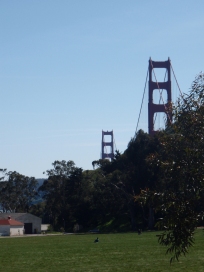
- View from Farley Bar
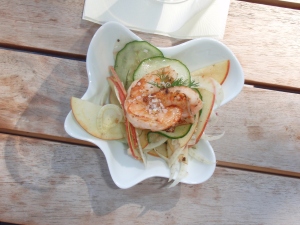
Fennel, cucumber & apple salad with grilled prawns*
Save the Planet: Eat a Grassfed Burger
March 1, 2009
This is an excerpt from our Spring Newsletter, written by Joe:

Jack and Joe grilling up some grassfed burgers
The rains have finally come, and everything is a beautiful green. What a blessing! We still haven’t heard the mating calls of the frogs in the ponds on the ranch, though, so it is still pretty droughty, but the grass is growing well. Drought is not a pleasant thing, but it seems to make more sense to be grateful for the rain we do have rather than bemoaning whatever we might not have. I recently was told that “Attitude is the only thing we can actually control.” Makes sense to me.
Our new ordering process is going very well. The orders are arriving fast and furious, and yet the processing of them is not overwhelming. Thank you, all of you who have ordered already. It makes life a lot easier, if we can fill in our planning sheets earlier rather than later. Please get your orders in, if you haven’t done so already, for we would hate to have you miss out. You may either go to our website order form or just click here http://www.morrisgrassfed.com/order.php .
I was reading the e-newsletter from the San Francisco Ferry Plaza market, and found something I thought warranted a comment. The idea of eating less meat to save the earth seems to crop up weekly at least, and kind of sounds like it might make sense, for it is bandied about by some authoritative voices, but it doesn’t. This is what I read:
“Mark Bittman wants you to eat less meat. In his typically disarming way, The Minimalist — as he’s referred to in his New York Times column, as well as online, where he writes a blog and appears in short cooking videos — will dish it to you straight.
His new book, Food Matters expands on his idea that “if you buy your own food and cook your own food, you tend to put much better things in your mouth than if you don’t.” Thanks in part to a realization he had after reading the UN report called Livestock’s Long Shadow, and to his decision to tackle some of his own health issues head on, The Minimalist is now advocating an even larger shift.”
Many of Mr. Bittman’s observations on food make sense, but his arguments about the ecological soundness of meat do not. Let’s take a look at the assumptions behind the UN report he cites, that livestock production imperils the health of the earth. The premise that livestock production is responsible for so many greenhouse gasses is totally dependent upon the belief that beef animals require confinement and grain feeding. It further assumes that the land that cattle are raised on could be used for production, in a sustainable way, of vegetables or grains that people could eat directly. These premises are not true, even in any remote sense. Therefore, the rest of the argument is not worth much.
The carbon footprint of the meat you eat is directly related to whether the animals from which it comes harvested the plants they ate; whether or not the plants they ate grew upon soils that were fertilized by their dung and urine; and whether or not the grazing and animal impact of the cows occurred in a way that added carbon and nitrogen to the soil and nourished other members of the rangeland community. Furthermore, beef animals should be raised, and mostly are, either on lands that are not suitable for the production of other human foods or in a way that replenishes the fertility of the soils used to produce these other foods. Neither Mr. Bittman’s nor the UN’s argument recognize these essential differences, and, therefore, their advice is actually counter-productive.
It is very difficult for a vegan diet to be sustainable, for the production process of such a diet excludes the use of animals in the mix of crops that a sustainable farm needs. Beef animals and other ruminants can digest much of the residue from the other crops grown on the farm, and as they do so they will happily provide labor for the farm, protein and energy for the farmer and fertility for the soils.
Mr. Pollan’s advice is wiser: “Eat food, not too much, mostly plants.” But strive to know the source—both place and process–of all of it. If you are eating Morris Grassfed beef, you are actually reducing your carbon footprint and enhancing your health and pleasure with every delicious bite. Now that’s a pretty picture!
